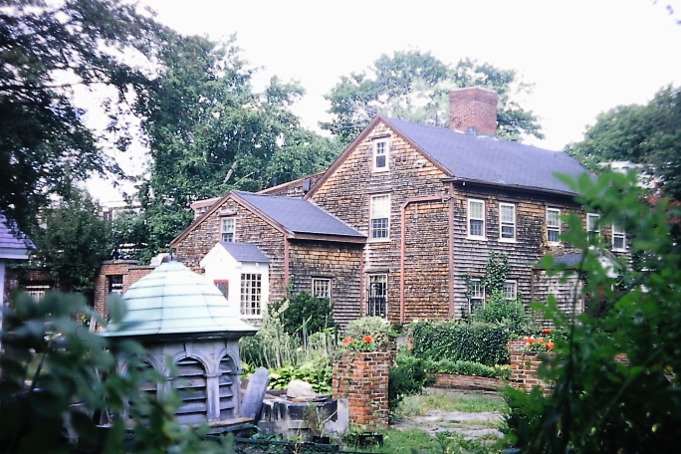
August 31, 2016 The Epstein Legacy at Fowler Clark Farm
Jeff Brussel is a Senior Project Architect at Perkins + Will and one of the team of architects at the firm working to transform the historic Fowler Clark Epstein Farm to a 21st century urban farm.
The Fowler Clark Epstein Farm is a unique historical property in the Boston area, an area already rich in architectural heritage. On paper, the reasons appear obvious when one scans the 200 year old history of this once large farm now consumed by the urban development and spread of Boston. Its identity as a farm places it in a unique position to register the urban development of the region simply by studying its own history of adaptation to the changing world around it. What is less obvious is that this farm exists in a world quite apart from what can be gleaned from its written history, and it’s this alternate identity that separates it from the countless other historic properties in the area. Knowing the history of the farm does not prepare one for the surprise that awaits the visitor.
Farming operations had long ceased by the time Jorge and Ida Epstein bought the property from Mary Clark in 1941. A jeweler by trade, with a store in the then predominately Jewish enclave of Mattapan, Mr. Epstein became a dealer in artifacts when approached by an old widower asking to sell an old silver spoon from her estate. She had been selling other spoons from her collection to other dealers, but it was Mr. Epstein who informed her they were gold, not silver as the others had told her. She was so grateful for his honesty that she asked him to sell the rest of her large estate, and from that moment, Jorge Epstein had a new side business in architectural salvage.
Jorge would eventually build an empire of his architectural salvage business, amassing one of the largest collections of architectural icons in New England. His business of visiting old houses and buildings as they were being torn down and buying their mantels, balusters, windows, doors, moldings, and other details, to resell at handsome profit, dovetailed nicely with the post war movement to remake the American city through urban renewal, resulting in much of the old building stock being demolished. As Americans fled to the suburbs, they left their old houses, often to the benefit of Mr. Epstein.
Not all of Jorge’s salvage was resold. No small amount of it was redirected to the old farmhouse in Mattapan, which underwent a transformation from rural relic to eccentric celebration of American immigration (both Jorge’s and the architectural icons). The land, once fertile with crops and animals, was now a farm of distinct architectural artifacts tended by his hired landscapers, which, in the words of Jorge’s son, resembled the gardens at Versailles, France. The gardens didn’t resemble those of Versailles, but the effect was likely equal in some respects. By the 1970’s, many of the white, Jewish residents left Mattapan for the suburbs. Jorge and Ida remained, continually adding to their garden and house, accentuating the novelty of farm in the city with manor in the urban neighborhood.
Mr. Epstein’s gardens, a collection of walled and stepped terraces ornamented with sculpture and stone taken from properties around Boston, was a fanciful contrast to the regular pattern of triple deckers nearby neighborhood. Whatever his intentions, the gardens must have been a source of curiosity to his neighbors. His transformation of the property may also play a role in the imagination it inspires in those who have lived beside the property for the past 50 years, where stories persist of buried treasure and underground tunnels and visits from Abraham Lincoln and Brigham Young.
Jorge wasn’t consciously an artist. His salvage business was heavily criticized by those interested in preservation and by the more traditional antique businesses. But his work on the Fowler Clark Farm paralleled collage movements in the contemporary art world and left us with a unique vision of how to occupy an historic property. By re-making the property in his own image, Jorge put a unique stamp on the farm in the city, one sure to surprise visitors to the restored property next summer.



